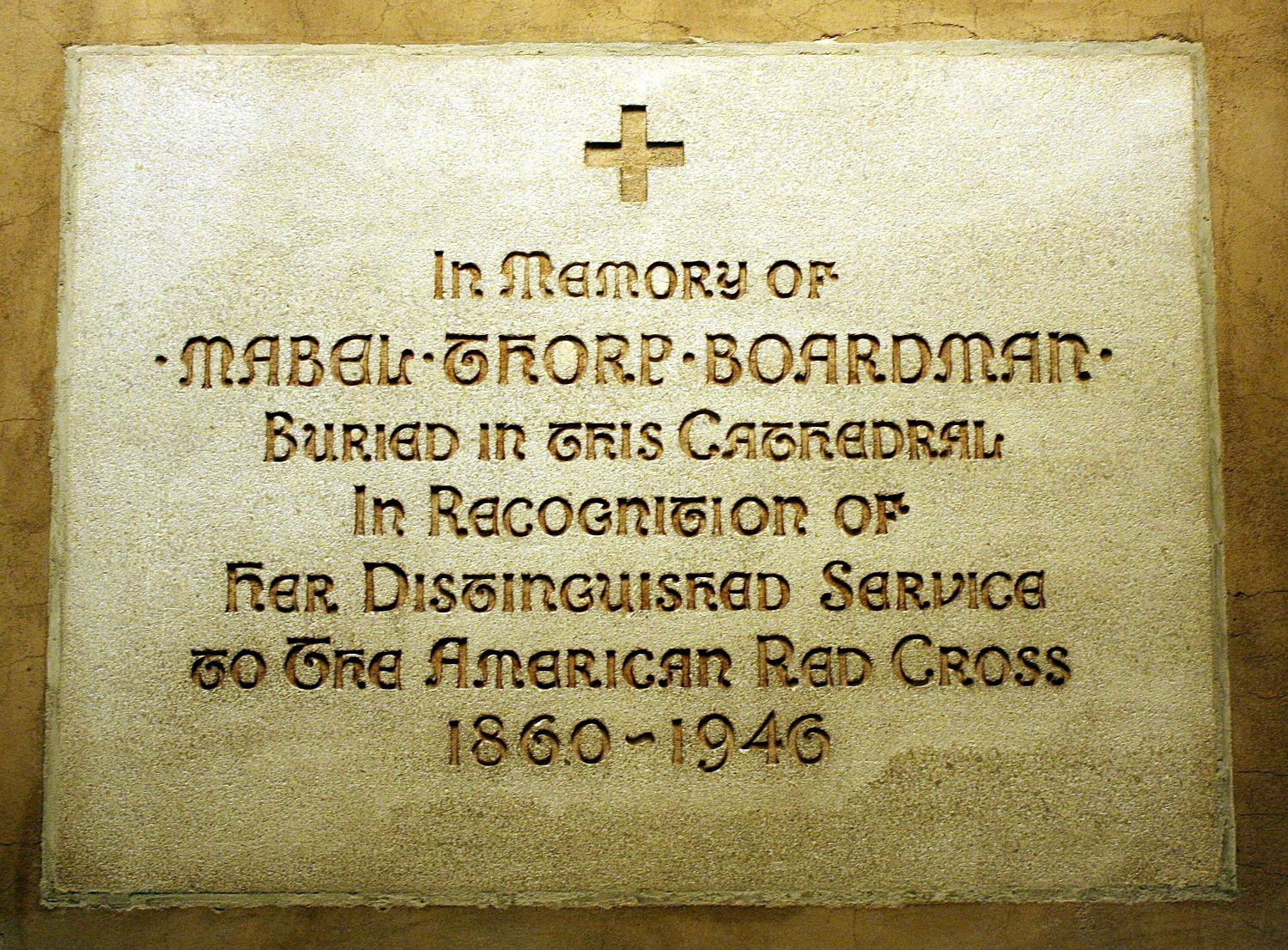National Volunteer Week is April 10 to 16, 2016. From the Archives salutes Mabel Thorpe Boardman, dedicated volunteer and architect of the modern Red Cross who gave 40 years of her life to the organization.
Clara Barton founded the American Red Cross in 1881. Her strength and determination were the dominant forces of the organization in its early years. She ran it almost singlehandedly.
By 1900, Barton had secured a government charter which resulted in establishing an executive committee–a more formal system of governance. Mabel Boardman was listed as one of the 50 incorporators of the American Red Cross on the congressional charter application. She came from a prominent Ohio family, was well-educated, well-connected, and had devoted her life to public service. Boardman was a product of the progressive era and believed the Red Cross should operate like a business.

Although Boardman’s name was put forward as an incorporator without her knowledge, she accepted the assignment and set about learning how the Red Cross operated internationally and in the various societies and auxiliaries which made up the loosely organized American Red Cross at the time.
She led the drive to redefine the Red Cross. Boardman sought guidance and counsel from social workers, financiers and government officials, including her family friend, the future President William Howard Taft.
Boardman became the driving force behind the newly reincorporated American Red Cross. Although she refused formal chairmanship (a role assumed by Rear Admiral William K. Van Reypen), Boardman took a position on the Executive Committee as secretary. Although influential throughout her tenure with the organization, Boardman’s most prominent period of authority was from 1904 until 1917.

During her tenure, Boardman turned the Red Cross into an organization that offered a broad array of services through a network of nationally chartered chapters. Those services and mandates were carried out by a well-trained volunteer corps supported by a competent professional staff. Among the services Boardman initiated were nursing, first aid and water safety and other opportunities for volunteer service.
In 1917 when the United States entered World War I, President Woodrow Wilson replaced the existing Executive Committee with a War Council to run the Red Cross. Boardman’s role was marginalized as the War Council was composed of an all-male group of bankers and lawyers. Undaunted, Mabel found a new way to contribute by establishing a Woman’s Advisory Committee to assist with the war effort.

Following the war, the Executive Committee was re-established, but it was not until 1921 that Boardman returned to a major leadership role as a central committee member and national secretary. She continued her involvement with the Red Cross for many more years.
She organized the Volunteer Service (later Volunteer Special Services), which included nurse’s aides, a motor corps, a canteen corps, a home service corps and the “Gray Ladies.” Boardman served as director of the Volunteer Special Services from 1923 to 1940, when the ranks numbered more than 2.7 million volunteers.
In addition to her national duties, Boardman was chairman of Volunteer Services for the District of Columbia Chapter.

Boardman, whose entire Red Cross tenure was served as a volunteer, resigned from the central committee of the Red Cross in 1944 and died two years later in March of 1946. Her passing was noted in an extensive New York Times obituary. The Boardman Memorial Bay in Washington’s National Cathedral, the place of her burial, was dedicated in June, 1958.
Learn more about Red Cross history on redcross.org. Follow Nicholas Lemesh on Twitter, @NickLemesh.


